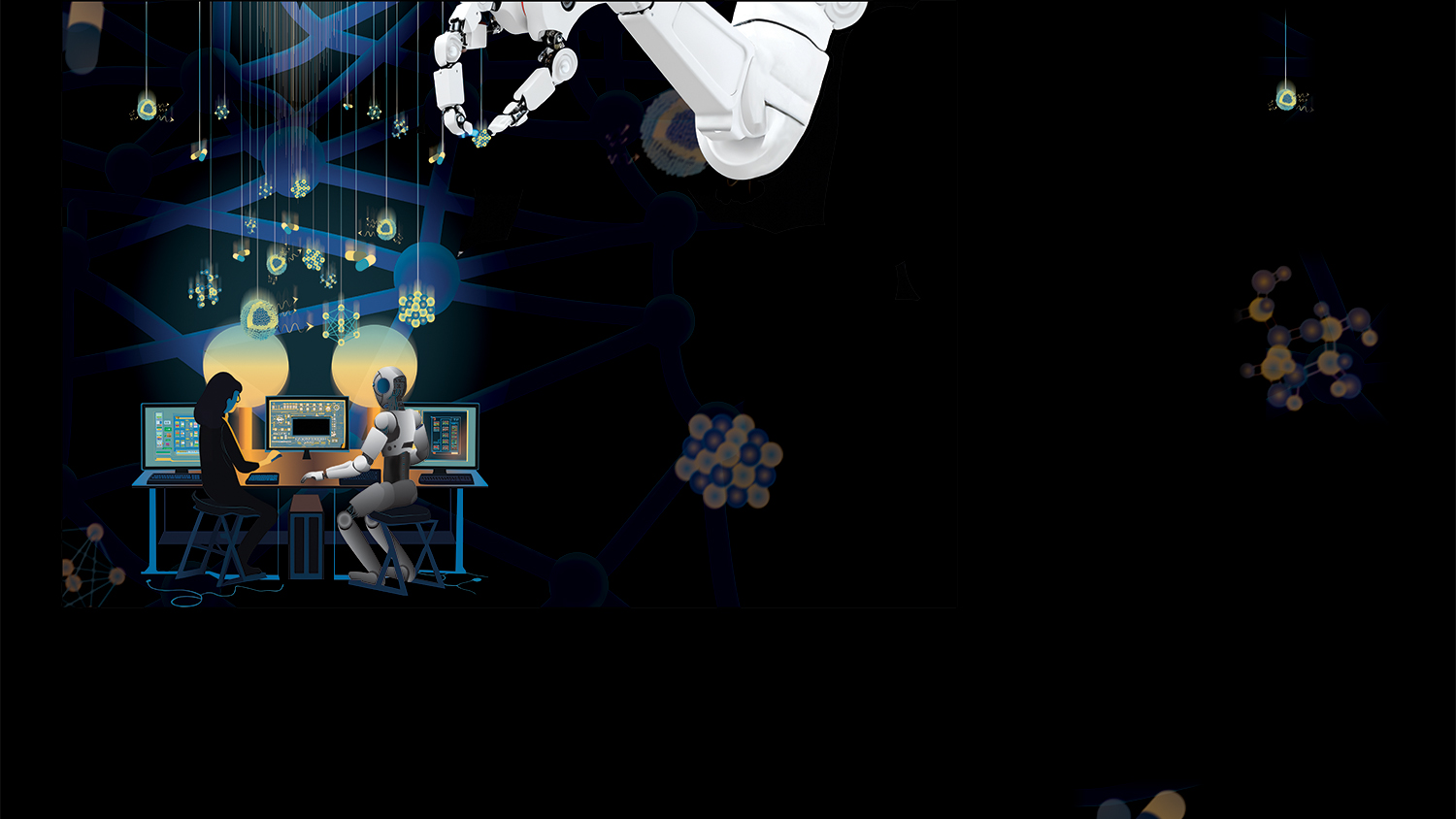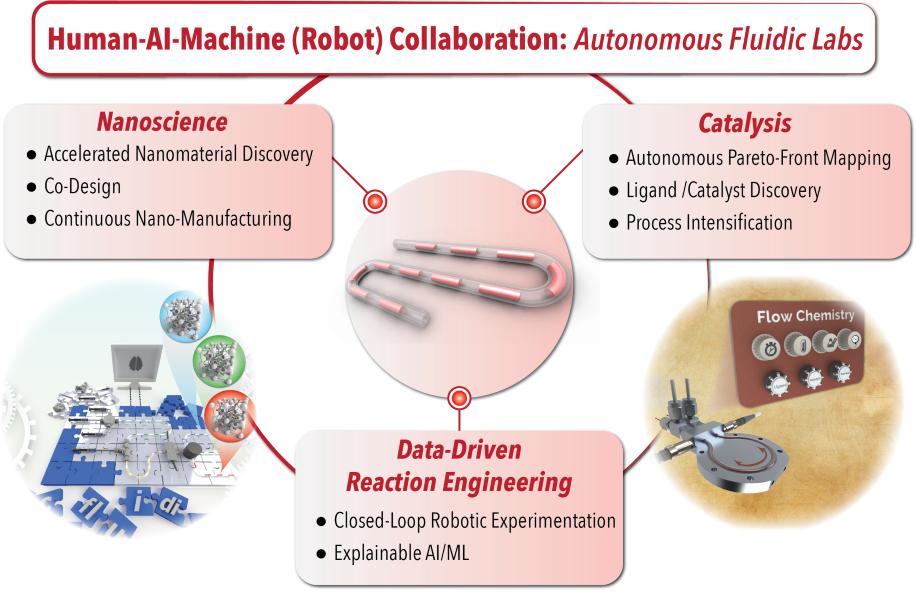Accelerating Discovery with AI

The original version of this article was written by NC State Engineering Communications.
Self-driving labs (SDLs) are the future. NC State is at the forefront.
There are vast numbers of undiscovered molecules and materials that offer solutions to the challenges in health care, the environment, energy and other areas facing our world. Using artificial intelligence (AI), robotics and lab automation, self-driving labs are teaming up with human scientists to accelerate the rate at which we can solve these challenges.
At NC State University, researchers are among the global leaders in creating SDLs. Professor Milad Abolhasani, Professor of Chemical and Biomolecular Engineering and University Faculty Scholar, has been developing SDLs since 2017. His research group is the first to make SDLs with microfluidic reactors for advanced functional materials, and it is now working with other NC State researchers to build SDL infrastructures.

Using AI and automated robotics, SDLs are capable of automatically designing a material or molecule, and of synthesizing and analyzing it in an iterative manner to find a new compound with desired properties. They are making the material and molecular discovery process faster and more efficient.
SDLs are of increasing interest in fields such as semiconductors, pharmaceuticals and specialty chemicals. But they are difficult to make, and in their early stages, researchers are working to define best practices before SDLs become more accessible.
“What I would like to see in the next five to 10 years is SDLs becoming like a robotic co-pilot for human scientists that they can use to perform their scientific tasks 100 to 1,000 times faster,” Abolhasani said. “So, it becomes that these robotic copilots augment the human scientists’ knowledge and intuition in running experiments and making decisions. This is the future of human-AI-machine collaboration.”
Industry partnerships
Eastman, a global specialty materials company, has a long-standing partnership with the CBE department. Abolhasani’s group is working with Eastman to develop SDLs that will reduce the time and resources spent on research and development of discovering more effective and sustainable chemical manufacturing methods so scientists can study more challenging chemical transformations.
In February 2024, NC State and Eastman researchers published a paper that describes a self-driving catalysis laboratory called Fast-Cat, which analyzes how ligands affect chemical reactions used in industrial and pharmaceutical applications. Ligands are molecules that control and speed up chemical reactions. There is a need for deeper understanding of how they work, as well as for discovery of new ones, to make the process more efficient. Fast-Cat provided a full analysis of a ligand in just five days, compared to the six-plus months it would have taken with conventional testing.
How do SDLs work?
SDLs operate in a closed loop of design-make-test-analyze under parameters set by a researcher. An SDL uses AI for autonomous design of the targeted compound and an automated robotic lab for rapid synthesis and characterization of the compound. It generates a predictive model of the reaction using AI to autonomously decide the next set of tests, and uses the new experimental data generated to make a better model, and so on.
As an example, the Artificial Chemist 2.0 — one of the earliest SDLs developed by Abolhasani’s group in 2020 — identifies and manufactures quantum dots, which are semiconductor nanocrystals used in LEDs and solar panels. A researcher gives Artificial Chemist 2.0 certain parameters it needs in a quantum dot, and the SDL then identifies the optimal material and most efficient means of producing that material. That process takes less than one hour.
A later SDL from the Abolhasani group, SmartDope, was developed to address a longstanding challenge regarding enhancing properties of materials called perovskite quantum dots via “doping.” “The previous record for quantum yield in this class of doped quantum dots was 130% – meaning the quantum dot emitted 1.3 photons for every photon it absorbed,” Abolhasani says.
“Within one day of running SmartDope, we identified a route for synthesizing doped quantum dots that produced a quantum yield of 158%. That’s a significant advance, which would take years to find using traditional experimental techniques. We found a best-in-class solution for this material in one day.”
SDL standards
Worldwide, there are few fully functional SDLs. As they are more widely adopted, researchers are defining best practices, with an emphasis on reproducibility and trustworthiness.
In January 2024, NC State hosted the National Science Foundation-sponsored Future Labs Workshop on democratization and innovation in SDLs attended by more than 100 people. Prof. Abolhasani was the Workshop Chair.
“We discussed the best possible way would be to not just have centralized or distributed self-driving labs: it’s an ‘and,’” Abolhasani said. “You need to have centralized, customized SDLs facilities like national labs, and then you need to have distributed, low-cost access to SDLs so that every researcher can potentially use a specific version of these powerful research acceleration tools that suits their needs in a chemistry or materials science lab.”